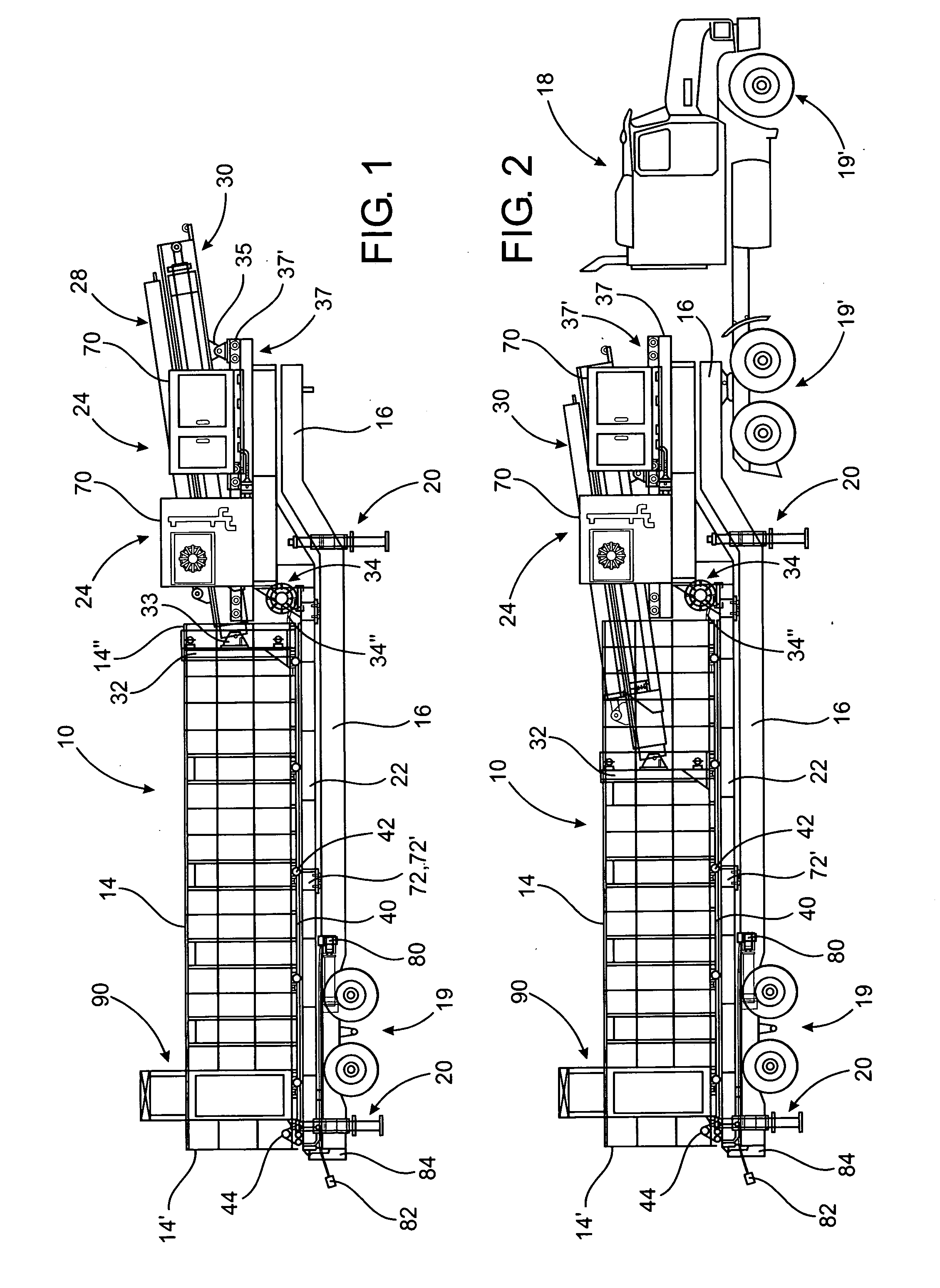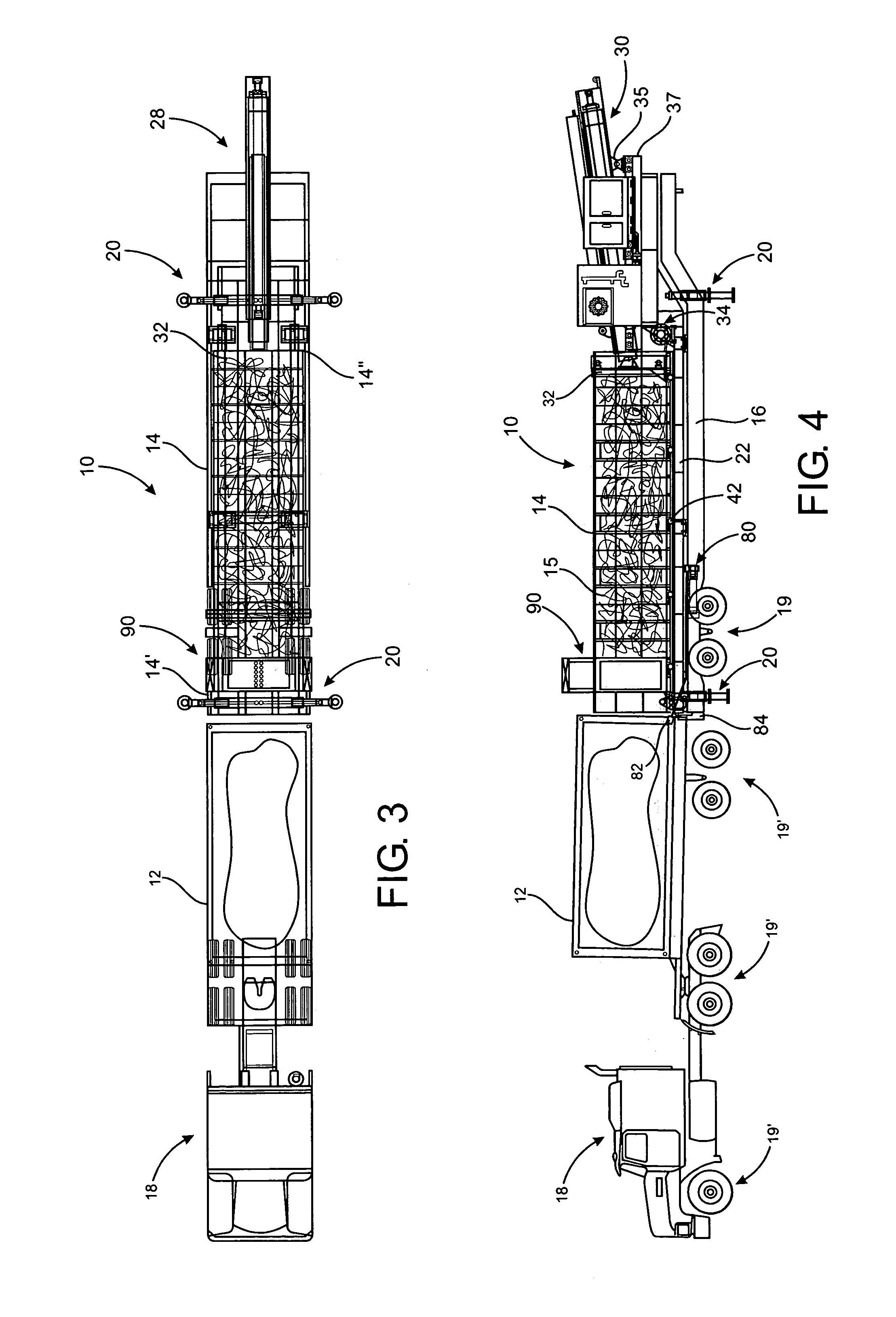Loading assembly for a receiving container
a technology for receiving containers and loading assemblies, which is applied in the directions of loading/unloading vehicles, transportation items, and removing refuse, etc., can solve the problems of increasing handling and time, difficult methods of loading materials, and many of the known methods due to not overcome the disadvantages, etc., and achieves the effect of convenient transportation
- Summary
- Abstract
- Description
- Claims
- Application Information
AI Technical Summary
Benefits of technology
Problems solved by technology
Method used
Image
Examples
Embodiment Construction
[0038]As shown in the accompanying Figures, the present invention is directed to a loading assembly, generally indicated as 10, structured for loading material into a receiving container which could take the form of a shipping or transportation container, as schematically represented as 12. While the loading assembly 10 is specifically structured for loading bulk material into the receiving container 12, a variety of other types of material can also be loaded. Accordingly, the loading assembly 10 includes a hopper generally indicated as 14 having an open top which facilitates the material 15 being deposited therein by any of a plurality of procedures and / or equipment, including those which are known in the loading industry.
[0039]Moreover, the loading assembly 10 includes a frame 16 which, as represented in FIGS. 1 and 2, may be substantially permanently disposed at a loading site as represented in FIG. 1. Alternatively, the frame 16 may at least partially define or be part of a chas...
PUM
 Login to View More
Login to View More Abstract
Description
Claims
Application Information
 Login to View More
Login to View More - R&D
- Intellectual Property
- Life Sciences
- Materials
- Tech Scout
- Unparalleled Data Quality
- Higher Quality Content
- 60% Fewer Hallucinations
Browse by: Latest US Patents, China's latest patents, Technical Efficacy Thesaurus, Application Domain, Technology Topic, Popular Technical Reports.
© 2025 PatSnap. All rights reserved.Legal|Privacy policy|Modern Slavery Act Transparency Statement|Sitemap|About US| Contact US: help@patsnap.com



